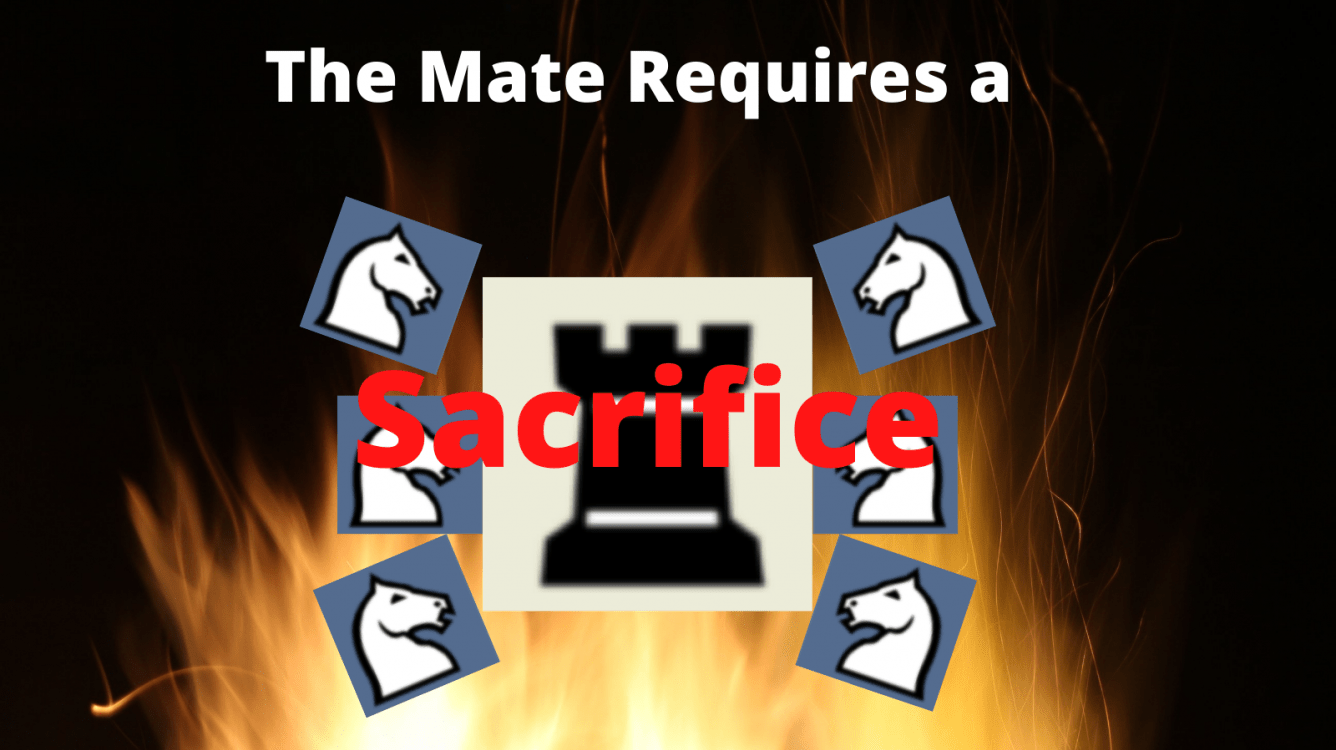
The Mate Requires a Sacrifice
Sacrifice
The point value of each piece is good to know when sizing up material advantage and is generally a good indicator of which side is winning. A pawn in one point, the knight and bishop are three, the rook is five, and the queen is nine. However, at the end of the day, the king is worth an infinite amount of points and the game. This is why king safety and positional advantages can play an even greater role than material, as in the following game.
The Game
In this game, I was playing the white pieces against a 1679 from the Philippines. And if you have been reading my blogs, you know I use my usual opening theory with the English, c4.
Black decides to play the Smyslov system, with e5, Bb4, and Nf6, placing pressure on my knight, but it also allows quick castling and king safety. I fianchettoed my light squared bishop, as always to control the light squares, a common idea in the English. Black strengthens his center with d6, and I play e3, prepping the development of my knight.
After I develop my knight, black plays c6. This is a common move against the English, as it severely weakens my bishop by cutting off its diagonal. I castle short and black pins my knight to my queen with Bg4. I then attack black's dark bishop with Qb3, also threatening the b pawn. He trades bishop for knight, and plays b6, leaving the c pawn kind of vulnerable. Thus, I begin concentrating my attack on that pawn with Qa4.
Black slides back his bishop to protect, and I play f4, trading his center pawn for one of my flank pawns. Black then concentrates his queen to protect the c pawn with e8, and I play d4, grabbing the center. But what's crazy is I missed b4, which is just straight up winning. Even though material is equal, black is using all of his pieces to protect the c pawn, and if I keep pushing, I'll be able to win black's rook, which is locked in the corner of my bishop's diagonal.
Instead, black keeps pushing his queenside pawns, and dedicates all of his pieces to defending one pawn. HIs knights are also on the side of the board. So I decided to rotate my queen to the center of the board and protect my e pawn so my dark bishop can take control of the other long diagonal, but then, black plays Nf6, getting his knight off the board. I then thought about a sacrifice.
Sacrificing a rook for a knight to expose the king is probably one of the most common sacrifices, but it can still be a difficult sacrifice to make. When sacrificing, you should make sure that you have something to follow up with. I decided to play e4 first, so that my queen and bishop at least had a diagonal to get to the king. Then, I struck.

Black took back with his pawn, weakening his dark squares around the king. He also played Bg4, allowing me to infiltrate with tempo with Qf4, hitting both pawn and bishop. Black made an interesting choice here to defend the pawn over the bishop, allowing me to get a completely winning position. Can you find the winning sequence of moves to give white a completely winning position?
Black is now left a knight and bishop down in material. My queen is also staring at a whole row of pawns, which quickly fall, and after black loses a lot of his pawns, he decides to resign on move 28 with Qxb6.
General Guidelines for Sacrifice
1. Before sacrificing your queen for a pawn, think, think, think.
2. If you are sacrificing to open an enemy king, make sure the king can't be protected by his pieces and that you have a follow-up.
3. If you can calculate a forced checkmate with a sacrifice, do it.
4. Sacrifice only a maximum of two pawns for development in openings, such as the Smith-Morra gambit.
5. Play a clearance sacrifice if a piece is in the way of a powerful and game-winning attack.
But what are your thoughts on this game? What other guidelines for sacrifices can you think of? I've also got 1600 bullet recently, but I'm not sure if I want to make a blog out of it. Let me know if you want to see the blunderous bullet games!
![]()
![]()
![]()
![]()
![]()
![]()
![]()
![]()
![]()
![]()
![]()
![]()
![]()
![]()
![]()
![]()
![]()
![]()
![]()
![]()
![]()
![]()
![]()
![]()
![]()
![]()
![]()
![]()
![]()
![]()
![]()
![]()
![]()
![]()
![]()
![]()
![]()
![]()
![]()
![]()
![]()
![]()